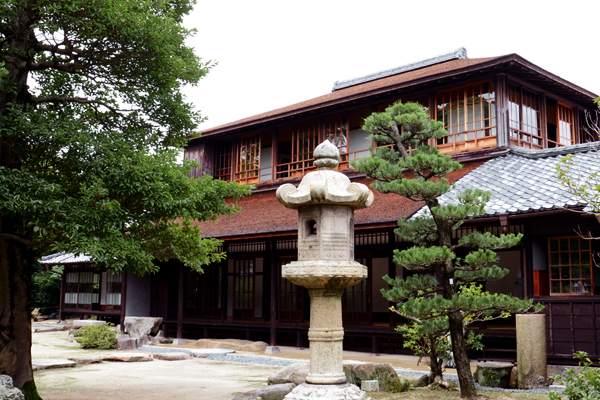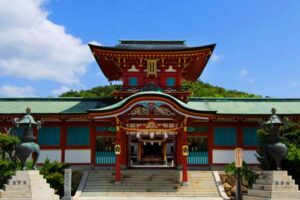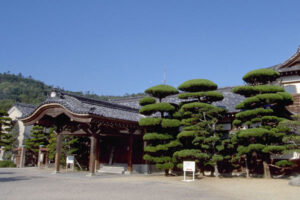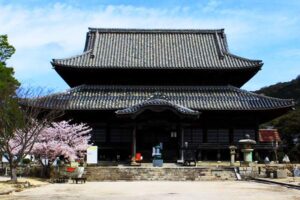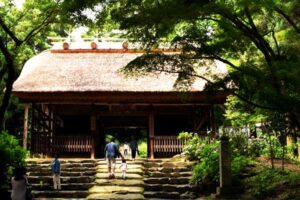A staging post on the way to Edo
A Staging Post on the Way to Edo
The origins of Eiunso go back to 1654, when it was known as the Mitajiri Teahouse (Mitajiri Ochaya) and had a very specific function. During the Tokugawa shogunate (1600–1868), Japan’s feudal lords had to spend every second year in the shoguns’ capital of Edo, so that the shoguns could keep a watchful eye on them. The local daimyos of the Mohri clan were no exception. From their base in Hagi Castle, some 50 kilometers from Hofu, they traveled by road to Mitajiri Port to go to Osaka by sea and thence by road to Edo. Since a daimyo could not very well stay alongside ordinary people in a normal inn, the Mitajiri Teahouse was built specifically to accommodate the daimyo and his retinue as they made their way to the capital.
The size of Mitajiri Teahouse fluctuated over the centuries. In the seventeenth century, it shared the site with the offices of the local administration. When, however, Mohri Shigetaka (1725–1789) decided to retire here, he moved the administrators out and greatly expanded the residential part of the building. The central, Edo-period (1603–1867) part of the building dates from 1783, the year Shigetaka moved here.
With the end of the shogunate in 1868, the feudal system was abolished and the daimyo were no longer obliged to spend every second year in the capital. Having outlived their purpose, most of the daimyo inns in Japan were sold off or demolished as a result. The Mitajiri Teahouse survived only thanks to the poor health of Duke Mohri Motoakira (1865–1938). Advised by his doctor that Hofu’s warm climate would do him good, Motoakira lived here until 1916, when he moved into the Mohri Principal Residence. Subsequently, the Mitajiri Teahouse was used as a second home by the Mohri family, who would retreat here when important visitors came to stay at the main house.
The villa is a marvelous microcosm of three centuries of Japanese architecture: the part you enter dates from the Taisho period (1912–1926), the central part from the Edo period, and the furthest part from the Meiji period (1868–1912).
The Mohri family presented the house to the city of Hofu in 1939 for use as a community center, and it was renamed Eiunso in 1941. After World War II, it was briefly used as a dance hall by the New Zealand troops who occupied Hofu.
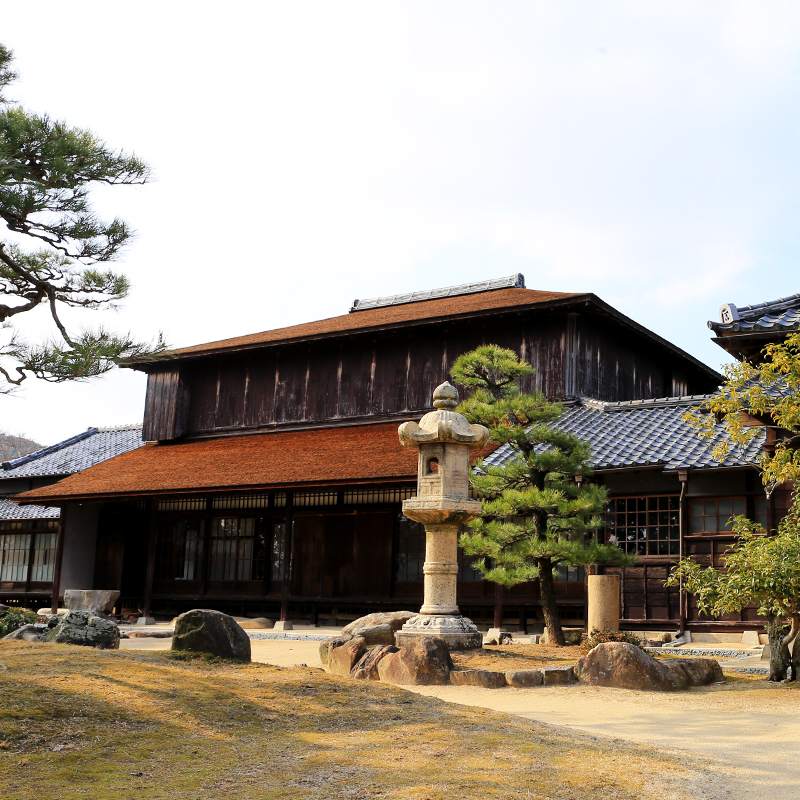
Photo:Eiunso House
Highlights of the Interior
Goza no Ma
This series of rooms is where Shigetaka used to receive visitors and hold audiences in the eighteenth century. He would sit in the furthermost room, enjoying the view over the inner garden on one side and the outer garden on the other. (Special thin pillars are even used to minimize any obstruction to his view!) The details of the room also provide insights into the social hierarchy. In the room furthest away from the daimyo, for example, the tatami mats have a plain black border because the less important people sat there. Meanwhile, the corridors for important people have soft, warm tatami mats underfoot, while those used by servants have bare, cold wooden boards.
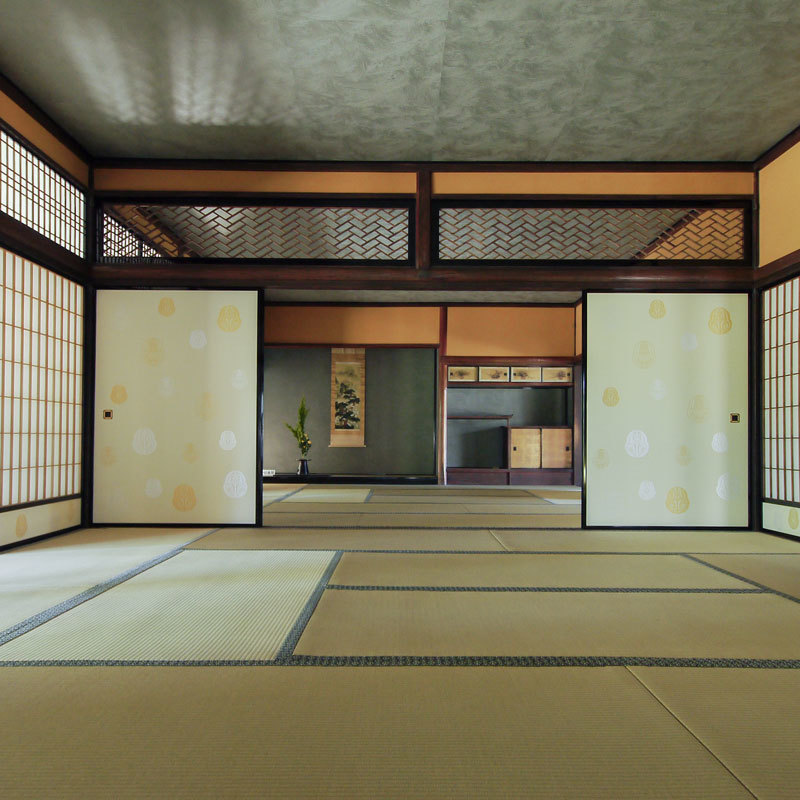
Photo:Goza no ma
Design Notes from the Tea Ceremony
The Mitajiri Teahouse is built in the sukiya-zukuri style, a style inspired by the aesthetics of the tea ceremony and involving the use of natural, rustic materials. Notice, for example, how the ranma transom screens between rooms are all of different patterns, and how the nageshi decorative tie beams along the walls are rounded (like tree trunks) rather than flat. The sliding doors in the garden corridor are carved with Chinese poems and made from single sheets of cedar.
The Second Floor
The second floor has a delightful view over the garden. It also provides an opportunity to look down on the roof, which is made of delicate hinoki cypress bark. Hinoki-bark roofs must be replaced every thirty years or so, but do a good job communicating the feel and texture of nature.
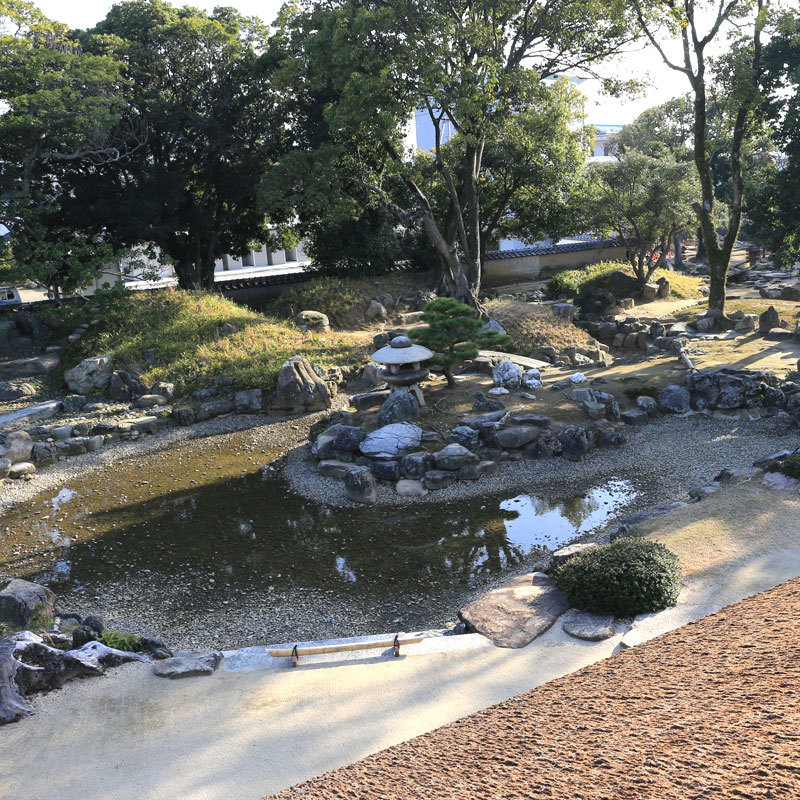
Photo:Garden seen from the second floor
Crests Abounding
The crest of the Mohri clan—an omodaka, or three-leaf arrowhead—is in evidence throughout the house. Look for it on the sliding doors, door pulls, and decorative nailhead covers. The clan chose this crest because the shape of the flower suggests the sharp tip of a weapon—in fact, it is also known as kachikusa, or “victory flower.”

Photo:Mohri clan
Eiunso Garden, Kagetsuro Teahouse, Suikinkutsu
A Garden Inspired by Chinese Art
Dating from the 1780s, the garden of Eiunso is contemporary with the central, Edo-period part of the villa built by Mohri Shigetaka (1725–1789). The focal point is a pond designed to evoke China’s Dongting Lake, a famous site for its beauty and a popular theme for Chinese painters. The rocks in the garden were collected from all over Yamaguchi. Of particular note are the tortoise stone (kame-ishi) just beside the stone lantern at one end of the island, and the stone water basin (chozubachi) incorporated into the far bank of the pond.
Suikinkutsu: Japanese Water Music
One interesting feature just beside the veranda of the central part of the house is the suikinkutsu dating from the 1780s. When a ladleful of water from the stone basin is emptied onto the black stones at its base, the water filters through the stones and produces a musical tinkle as it drips down. This is because an earthenware pot with a hole in its base is buried upside-down beneath the stones. The sides of the pot form an echo chamber, which amplifies the sound of the drops landing on the pool of water below.
It is called a suikinkutsu, or “water koto cave,” because the sounds it produces supposedly resemble the notes of the koto, a stringed musical instrument often called the Japanese harp. Like a wind chime, the sound is supposed to be cooling and refreshing.
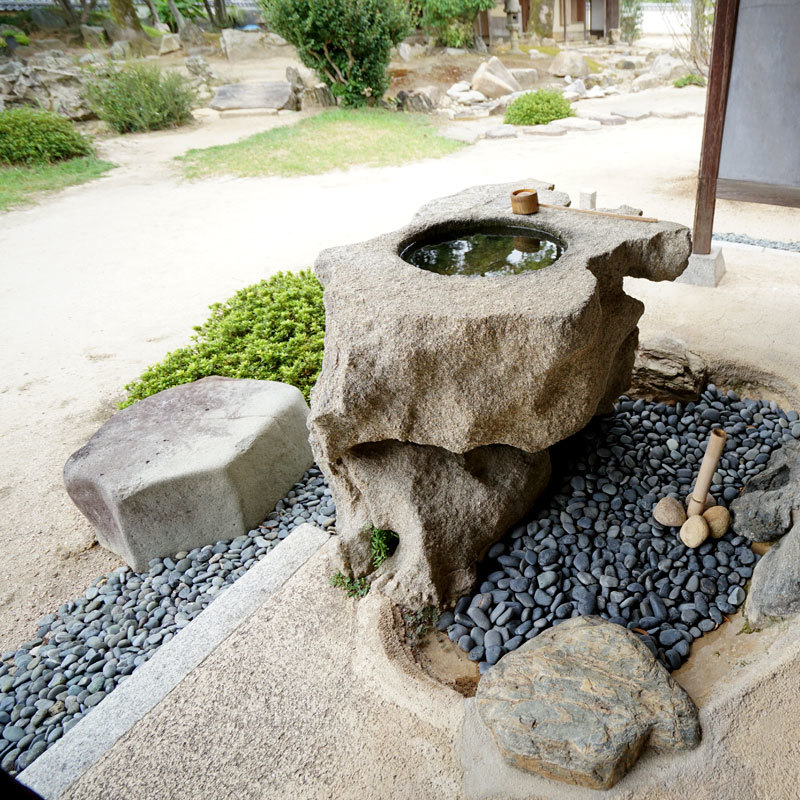
Photo:Suikinkutsu
A Teahouse Within a Teahouse
In one corner of the garden sits the Kagetsuro Teahouse. Originally built in the precincts of Suo Kokubunji Temple in 1786, it was dismantled and rebuilt here in 1888. Kagetsu refers to an eighteenth-century style of tea ceremony conducted by five people in an eight-mat tatami room. The Kagetsuro Teahouse has a range of different room sizes, allowing it to accommodate up to thirty people and a variety of tea ceremony styles.
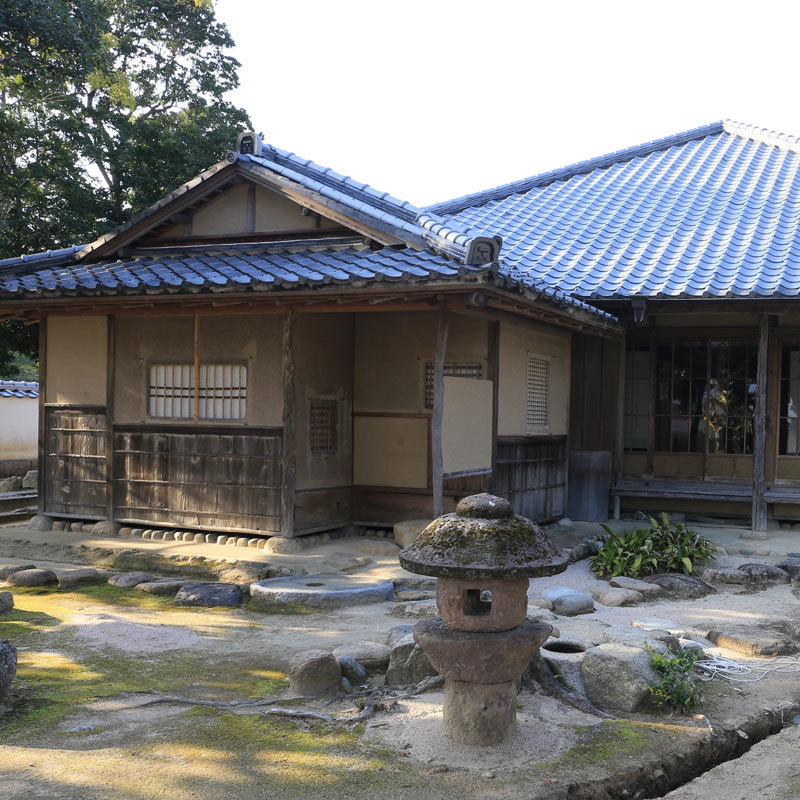
Photo:The Kagetsuro Teahouse
翻訳について
このサイトの解説文は観光庁の地域観光資源の多言語解説整備事業で作成しました。
Official Site
Information
◆Name of the historical building
Eiunso
◆Address
10-21 Ochaya,Hofu City,Yamaguchi Prefecture
◆Phone number
0835-23-7276(Eiunso)
0835-25-2237 (Hofu City Cultural Promotion Section)
◆Opening hours
9:30a.m. ~ 16:30 p.m. (Last entry is a 16:00 p.m.)
◆Closing
Monday(If Monday is a holiday the next day)
12/29~1/3
◆Traffic access
Take Bocho Bus at South Exit of Hofu Station board for Nakanoura and get off at Mitajiri Byoinmae bus stop.
It takes about 5 minutes.
◆Parking areas
Available
◆Barrier-free toilets
Available
Detail:Yamaguchi Prefecture Tourism Federation website “Come to Yamaguchi” barrier-free information page
◆Admission fee
High school students and older: \300
Elementary and junior high school students: \150
